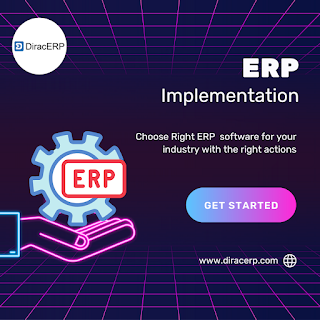Path to Successful ERP Implementation
ERP implementations can be inconvenient, expensive, and frustrating if not properly planned. The whole process can only be pushed in the direction of general success by following certain basic rules. For starters, organizations need a lot of time and careful research to determine the best ERP software that can meet their business needs. Besides the selection, the implementation process is also or can be more important. If it is not implemented successfully, even the most effective ERP system will not work and not deliver the expected value to the organization. ERP implementation involves a series of lengthy and complex processes. Organizations should have a predetermined roadmap for the different stages, as a lack of meticulous understanding of any or all of these stages can lead to serious disruption. To make it easier for you, we've listed the path to a successful ERP implementation. Read on to make sure your organization is taking the right actions at the right time.
What are the steps to a successful ERP implementation?
Defining ERP requirements
Defining ERP requirements Once you understand that your business needs an ERP system, your research will begin. There are so many options on the market that it can be difficult to decide. So defining your ERP goals should be the first step to a successful implementation. Is it better to track inventory or manage work orders or optimize other processes that you want a simplified ERP system better? Once this is decided, you can move on to determining the budget and timeframe in which you are looking to ideally invest. Collect and document all of this information to improve the practicality of your ERP requtrement.
Research, Explore, and SelectResearch is the immediate next step towards a successful ERP implementation. Identifying ERP software with industry-specific functionality is an ideal choice for any business. This will prove to be the right solution for your business requirements while reducing deployment time and costs. Integrated competence is also a necessary study. This feature saves you the hassle of managing multiple systems and also allows you to combine the existing systems you use with the new ERP software.
Internal team selection
ERP implementation has an impact on the entire organization. But he needed a dedicated internal management team to keep the project on track and move it forward in the right direction. The members of this team play an important role in the successful implementation of an ERP system. They must be able to master the elimination of resistance and propagate a positive attitude towards the ERP change among employees. Without this commitment, ERP implementations may face a higher risk of failure.
Configure and Prepare for Deployment
ERP implementation is a multi-step process. The system stores data and helps you use and understand it better. Therefore, the data programmed to be included in the new ERP must be accurate and up-to-date. Educating your staff about the stages of ERP implementation will help develop a positive acceptance of business procedures and the changes in accountability brought about the new system. This speeds up the process of identifying possible problems or concerns with the software, its impact, and any necessary adjustments needed.
Direct with Deployment
At this stage, your entire business is transferred from the old system to the new ERP system. Typically, it is advisable to deploy the system first in one location and then in other locations. This helps solve launch issues in one location and ensures minimal disruption in deployment to other locations.
Employee training
Take enough time to train your employees on how to use the new ERP system. This will help them familiarize themselves with the processes, thus maximizing tool usage. Employees can be trained through regular core meetings or through department-specific training. The latter is a more well-defined and done individually or in small groups to teach employees how to operate a particular function related to a particular department.
Post-implementation support
The final step of ERP implementation includes monitoring the software's
performance. Indeed, even the most successful ERP implementation can experience
problems from time to time. Mark down any issues you face to
get help from the support team to resolve them faster. In addition, regular
maintenance will facilitate the operation of the system. You'll even receive
notifications from your provider about new versions, including bug fixes and
feature improvements for previous versions. Here we sought to explain the
different stages of a successful ERP implementation. However, the actual
process is complex and requires the consultation of industry experts.
DiracERP Solutions has over 10 years of experience designing and implementing ERP solutions with enhanced functionality. To learn more about our services , contact us @ +919891806551 and get help from ERP experts in selecting and implementing the best ERP software for your business.
